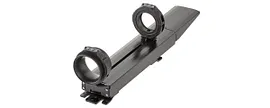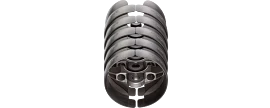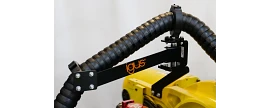The decision was made in favour of the igus triflex system. The triflex energy chain offers greater flexibility and manoeuvrability compared to conventional corrugated tube systems. At the same time, the bend radius is limited so that the cables cannot be bent excessively. The triflex energy chain also allows a certain amount of torsion.
The RSEL system was chosen for the energy supply on the robot as it offers the best price-performance ratio. It is more cost-effective than the RSE and slimmer than the RS system. In addition, various media had to be safely guided on the robot, such as hoses for polishing agents, compressed air as well as control and data cables for the functions of axis 6 with the camera.
The cost-effective TRL (light 3D chain) was selected for the less stressed axes 1 to 3. It is light, inexpensive and easy to fill.
For axes 3 to 6, the stronger TRE.100.145.0 was chosen to provide sufficient space for the cables and hoses. The filling can be easily optimised using the two openings on the side of the energy chain.
With its maximum rotation angle of 270° the swivel bracket ensures the necessary freedom of movement for the robot, presenting the ideal cost-effective solution for this application.




